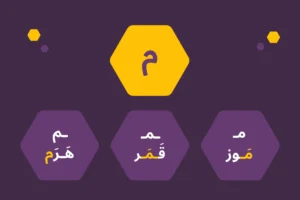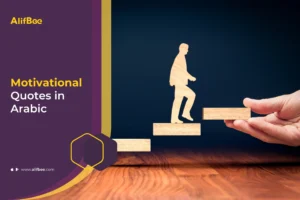Arabic Verbs Related to Feet and Legs
Welcome to another blog post in our series focused on Arabic verbs that are commonly used in connection with body parts. These verbs can help you talk about different actions you take every day.
Read the previous blogs in this series here (Hands…, Eyes…).
Today, we will look at the verbs that are usually used with the body parts of legs and feet. These verbs encompass a wide range of activities, such as walking, running, kicking, dancing, etc.
Regardless of your current level in the Arabic Language or where you are in your journey learning Arabic, you can add these key verbs to your repertoire of essential verbs that can be helpful at any time and in any situation.
In the ten verbs you will learn, we provide you with the verb in two tenses, the present and past. We also give the translation of the verb, its transcription, three translated examples, and a short explanation of the verb’s meaning and the possible situations to use it.
Are you ready? Grab a pen and paper and let’s go through them step by step!
Verb 1: يمشي \ مشى
to walk
Yamshy / mashá
Examples
أمثلة
We walked in the park together.
مشينا في المنتزه معًا
She walks to work every day.
تمشي إلى العمل كلّ يوم
They walked around the city.
مشوا حول المدينة
The verb “مشى” is a fundamental verb in Arabic that describes everyday situations, such as walking to work or taking a leisurely stroll. It is an essential verb to know for navigating any environment and expressing your actions to others.
Verb 2: يَجْري \ جَرَى
to run
Yajry / jará
Examples
أمثلة
He participated in the running race last year.
جرى في سباق الجري العام الماضي
The children were running in the playground.
كان الأطفال يجرون في الملعب
She runs every morning to stay fit.
تجري كل صباح لتحافظ على لياقتها
The verb “جرى” refers to moving at a faster pace than walking or “مشى”, typically by jogging or sprinting. This verb can be used in a variety of contexts, such as discussing exercise routines or conveying urgency in a situation. Knowing this verb will help you communicate more dynamic activities and convey a sense of speed in your conversations.
Verb 3: يَقِفُ \ وَقَفَ
to stand
Yaqifu / waqafa
Examples
أمثلة
He stood by the window, watching the rain.
وقف جانبَ النّافذة يشاهد المطر
They stood in line for hours
وقفوا في الطابور لساعات
She stood up to greet her guests
وقفت لتستقبلَ ضيوفها
The verb “وقف” is the action of being in an upright position on one’s feet. This verb can be used to describe basic actions like waiting for a bus or standing in line. It is a helpful verb to know when discussing positions or postures in different scenarios.
Verb 4: يَجْلِسُ \ جَلَسَ
to sit
يَجْلِسُ \ جَلَسَ
Examples
أمثلة
We sat on the bench to rest
جلسنا على المقعد لأخذ قسط من الراحة
She always sits in the front row in class
دائمًا تجلس في الصّفّ الأماميّ في الفصل
They sat around the campfire, sharing stories.
جلسوا حول المخيّم يتبادلون القصص
The verb “جلس” refers to the act of resting on a chair, bench, or any other supporting surface. It is a common verb that can be used to describe routine activities, such as sitting down for a meal or taking a seat in a meeting. Learning this verb will help you express and understand various everyday situations.
Verb 5: يَقْفِزُ \ قَفَزَ
to jump
Yaqfizu / qafaza
Examples
أمثلة
The cat jumped onto the table
قفز القطّ على الطاولة
She jumps rope as a part of her exercise routine
تقفز على الحبل كجزء من روتينها الرياضي
The kids were jumping on the trampoline
كان الأطفال يقفزون على الترامبولين
The verb “قفز” describes the action of propelling oneself off the ground using one’s legs. This verb can be used to convey a sense of excitement, playfulness, or even urgency, depending on the context. Incorporating this verb into your vocabulary will allow you to describe more energetic and lively actions.
Verb 6:يَرْكُلُ \ رَكَلَ
to kick
Yarkulu / rakala
Examples
أمثلة
He kicked the ball into the goal.
ركل الكرة داخل المرمى
She practiced her kicks during martial arts class.
تدرّبت على ركلاتها خلال حصة الفنون القتاليّة
The soccer player kicked the ball with great force.
ركل لاعب كرة القدم الكرة بقوةٍ كبيرةٍ
The verb “ركل” refers to striking something with one’s foot. It can be used in various contexts, such as playing sports or describing a self-defense move. This verb adds a physical dimension to your conversations, allowing you to discuss actions involving force or impact.
Verb 7: يَرْقُصُ \ رَقَصَ
to dance
Yarquṣu / raqaṣa
Examples
أمثلة
The newlyweds danced to the romantic music
رقص العروسان على أنغام الموسيقى الهادئة
She loves dancing to her favorite songs
تحبُّ أن ترقص على أغانيها المفضلة
The children danced at their friend’s birthday party
رقص الأطفال في حفلة عيد ميلاد صديقهم
The verb ” رقص” is the act of moving rhythmically to music, often following a set sequence of steps. This verb can be used to describe cultural, social, or personal expressions of movement and creativity. Knowing this verb will help you engage in conversations about art, entertainment, and celebrations.
Verb 8: يَخْطُو \ خَطَى
to step
Yakhṭū / khaṭá
Examples
أمثلة
She stepped carefully across the wet floor.
خطت بحذر على الأرض المبتلة
He took a step back to avoid the puddle.
خطى للخلف لتجنب بركة المياه
They stepped in unison during the dance performance
خطوا بالتّوازي خلال العرض الرّاقص
The verb “خطى” refers to the act of taking a single stride or moving one’s foot to a new position. This verb can be used to describe careful or deliberate movements, such as stepping over an obstacle or walking on tiptoes. It is useful for expressing more nuanced or specific actions related to walking or moving.
Verb 9: لَفَّ رِجْلَهُ
to cross legs
Laffa rijlahu
Examples
أمثلة
She crossed her legs while sitting in the meeting.
لفّت رجلًا على رجل أثناء الجلوس في الاجتماع
He sat on the chair and crossed his legs.
جلس على الكرسي ولفّ رجله
He crossed his legs while listening to the speaker.
لفّ رجله أثناء الاستماع إلى المتحدث
This phrase describes the action of placing one leg over the other while seated. It is a common posture used in various social settings and can indicate relaxation, attentiveness, or even formality. This expression adds depth to your descriptions of body language and posture in different situations.
Verb 10: يَمُدّ رِجلَيه \ مَدَّ رِجْلَيْه
to stretch one's legs
Yamudd rijlayh \ Madda rijlayh
Examples
أمثلة
After sitting for a long time, she stretched her legs
مدَّت رجليها بعد الجلوس لفترةٍ طويلةٍ
He stretched his legs to relieve the muscle stiffness.
مدَّ رجليه للتّخفيف من صلابة العضلات
They took a break to stretch their legs during the long drive.
أخذوا استراحة لتمديد أرجلهم خلال رحلة القيادةِ الطّويلة
Finally, the phrase “مد رجليه” refers to extending one’s legs outwards, often to relax or alleviate muscle tension. This verb can be used to discuss activities like yoga or simply taking a break after sitting for a long time. Incorporating this expression into your vocabulary will help you convey a sense of relaxation and physical well-being in your conversations.
Final word
These were our 10 new verbs used in different examples that illustrate a wide variety of contexts to use them. We hope you enjoyed going through the blog and that you found it useful.
Keep in mind that to master using these new verbs, you have to put them into practice.
Further practice
Our tip for you is to try and use these verbs throughout your day as you do any of the daily actions connected to them. The more you use them, the fewer mistakes you make. You can also take this quick quiz we created to help you overcome any trouble you still have learning these verbs.
To make practicing newly learned language easier, we recommend you download our specially crafted planner, which we have equipped with a rich 30-page worksheet accompanied by over 200 practical exercises and activities, so it could serve as a powerful tool to back your acquired knowledge and newly learned language and push your learning journey forward with loads of practice opportunities.
Happy learning, and until next time, مع السلامة (ma’a as-salāma)!








